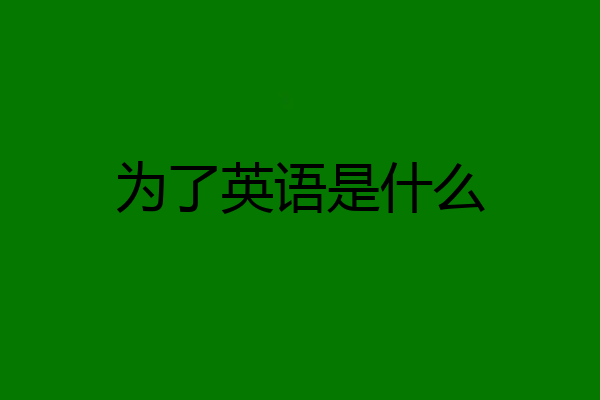
乐趣小鱼
1. to+动词原型可作目的状语,意为“为了”2.词组in order to do sth,后跟动词原型 in order that,后跟从句3.词组so that,后跟从句如:He got up early to .catch the first bus.= He got up early in order to catch the first bus.= He got up early in order that he could catch the first bus.=He got up early so that he could catch the first bus.他起得很早是为了赶上早班车。


新艺能门窗公司
"为了"用英语:in order to或so as to.
in:
prep. 在 ... 里;在 ... 地方;在 ... 期间;在 ... 方面;进入...里面;处于...状态;穿着...;以...的方式
adv. 在家;入;进;向里;在某地;并入;在某种关系中
adj. 在里面的;新来的;执政的;<口>时髦的
n. 当权者;影响;达成目标的路径
We are trying to teach mathematics in a more interesting way.
我们正在努力尝试着用一种有趣的方式来教数学。
We all sat around in a circle.
我们围成一圈坐在一起。
in用法:
in, according to, by, from, on, under
这组词的共同意思是“根据”“按照”。其区别是:
according to是这组词中最常用的一个,可指依据某人的话语、说法、指示,也可指按照某计划、法规等,可以是正式的,也可以是非正式的。
by的本意是“凭借某种手段、方式”,由此引申出“依据,按照”,其宾语常为某种规则、法规、标准、习俗等; from的本意是“来源”,由此引申出“根据事物的来源判断”。
in指“依据”时,仅见于与eye, opinion, view等表示观点的名词或order, sequence等表示顺序的名词连用,还见于in law, in practice, in theory等短语中。
on是根据事物发生和存在所依靠的基础这一用法,由此引申为“根据,按照”,与之连用的词一般是表示忠告、规则、命令、指示、协议、建议、原理的名词; under通常指根据正式的协议、法令、条款、合同等,含有在其控制或约束之下的意味。

lucherking18
1.inorderto(后接动词原形,既可以用于句首,也可以用句中)2.forthepurposeof(后接名词、代词、动名词)3.soasto(后接动词原形,只能用于句中,不能用于句首)4.to(后接动词原形)5.for(后接名词、代词、动名词)